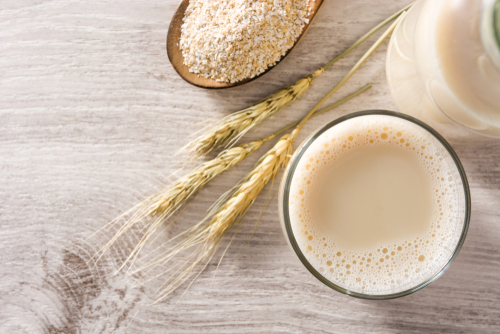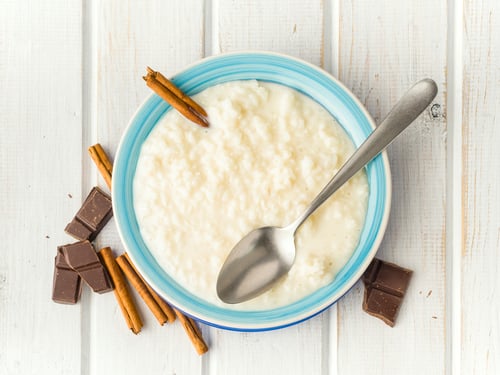Not long ago, ‘milk’ used to mean just one thing: cow’s milk.
Boy, has that changed.
Go to any major supermarket today and you’ll spot a lineup of so-called “milks” that sound like anything but milk: peanut milk, hazelnut milk, hemp milk, flax milk, macadamia, the list goes on.
So, what’s the deal with plant-based milk? And once we’re going non-dairy, how do we know which one to choose?
Read on as we take a close look at why some are choosing to move away from dairy, and how to choose the best plant-based milk for your needs.
Why non-dairy milk?
The proliferation of milk alternatives begs the question: are plant-based milks better for you than cow’s milk?
The answer isn’t so clear.
Though studies have shown that cow’s milk, with its impressive panel of macro- and micro- nutrients (protein, vitamin B12, calcium, and more) has a higher nutritional density than any plant-based milk, there are also some potential downsides to cow’s milk.
Concerns over antibiotic use, modern processing methods, and animal welfare have caused many to switch over from cow’s milk to plant-based substitutes.
Additionally, dietary concerns like lactose intolerance, dairy allergies, and the increasing popularity of vegan diets have cast aspersions upon the once-assumed healthfulness of cow’s milk.
Say goodbye to fleishophobia
Whether or not you’re a fan of cow’s milk, you can agree that the abundance of plant-based milks on the market is an absolute boon for kosher consumers.
Even for cow’s milk devotees, having a plant-based substitute in the fridge will help you get through those interminable hours after eating fleishig.
Plus, plant-based milks can be used as substitutes for dairy in recipes — allowing you to easily convert milchig recipes to parve.
Plant-based milks might not be as innocent as they seem
At the moment, plant-based milks are in the category of health food — after all, they’re basically vegetables, right?
Not exactly.
To amp up their appeal, many plant-based milks on the market are dosed with various additives that add palatability (added sugar, flavorings), texture (gums, starches, carrageenan), and health benefits (added vitamins).
The healthfulness of these additives is debatable; if you’re looking for the most “whole” product, scan the label and find the milk with the least amount of ingredients.
If you want other benefits, however (like getting your kids to drink it), you’ll likely have more success with sweetened and flavored varieties of plant-based milks.
Most common plant-based milks — and what to do with them
1. Almond milk
Nutrition: While almonds themselves are chock full of protein, antioxidants, and fiber, the process of turning almonds into milk ends up removing the bulk of their nutritional value. (Many manufacturers fortify almond milk with various vitamins in order to make up for the lost nutritional content.)
Because almond milk is mostly water, unsweetened almond milk is generally lower in calories than other dairy-free milks. But because of its low calorie content, almond milk is also not as satisfying as some of the heavier milks.
Flavor: Pleasant, slightly nutty, watery
Uses: Because of its lightness and mild flavor, almond milk is best used in any place you’d use skim milk or water, such as smoothies, lattes, or poured over cereal.
2. Soy milk

Nutrition: A key player in the plant-based milk arena, soy milk is the most similar to cow’s milk. A complete plant protein, soy contains all the essential amino acids, which is what makes soy products like tofu and soy milk popular with vegetarians.
Compared with other plant-based milk alternatives, soy is a rich source of protein and fat, making it higher in calories, and thus more filling.
Soy milk is often fortified with calcium to match the natural calcium content of cow’s milk.
Flavor: Creamy, rich, a distinctive bean-like taste
Uses: Use soy as a direct substitute for cow’s milk in recipes, as a coffee creamer, or drink on its own.
3. Oat milk

Nutrition: Relatively new to the alternative milk scene, oat milk has quickly gained popularity; (look out for Gefen Oat Milk, coming soon to a store near you). Oat milk is similar to cow’s milk in terms of calorie and fat content, but without the naturally-occurring nutrients.
Like other plant-based milks, oat milk is often fortified with vitamins and minerals.
Flavor: Naturally sweet, thick, creamy, oat-like aftertaste
Uses: Due to its creaminess and pleasant texture, oat milk is becoming a go-to milk alternative to use in coffee. Making an appearance on Starbucks and Dunkin’ menus, it’s a favorite for use in lattes and other coffee-based drinks.
4. Coconut milk
Nutrition: There are many varieties of coconut-based liquids, such as coconut cream, coconut milk, coconut water, and coconut-based beverages, so check the label before you buy. A great one is Gefen’s Coconut Milk.
True coconut milk is composed mostly of saturated fat, and contains naturally occurring manganese, phosphorus, iron, and magnesium.
Flavor: Super rich, creamy, coconut-esque
Uses: Because of its high fat content, coconut milk is a great substitute for dairy cream in soups and desserts.
5. Rice milk

Nutrition: Compared with other milks, rice milk is high in carbohydrates and low in protein and fat.
Like almond milk and oat milk, rice milk is low in naturally-occurring nutrients, and is often manufactured with added vitamins and minerals.
Flavor: Naturally sweet, delicate, neutral taste
Uses: Because rice milk is one of the most hypoallergenic milks, it is often used by people with allergies to nuts, soy, and dairy. The neutral, slightly sweet, flavor of rice milk goes great in smoothies, cereal, and as a substitute for regular milk in cooking and baking.
____________________________________________________________________________
When it comes to plant-based milks, there is no one-size-fits-all. Allergies, taste preferences, cost, and intended use all play a factor in figuring out your ideal milk alternative.
You best bet? Go shopping!
With a bit of trial and error, you’re sure to find the non-dairy milk that works best for you.





